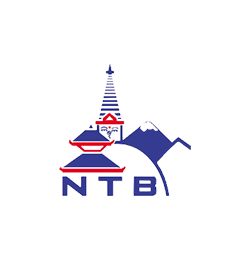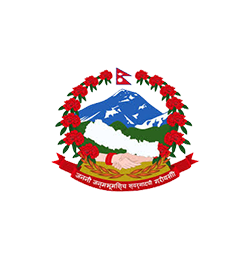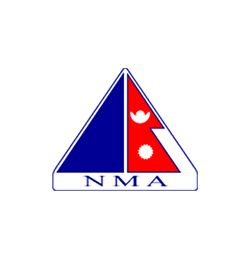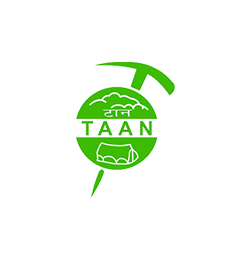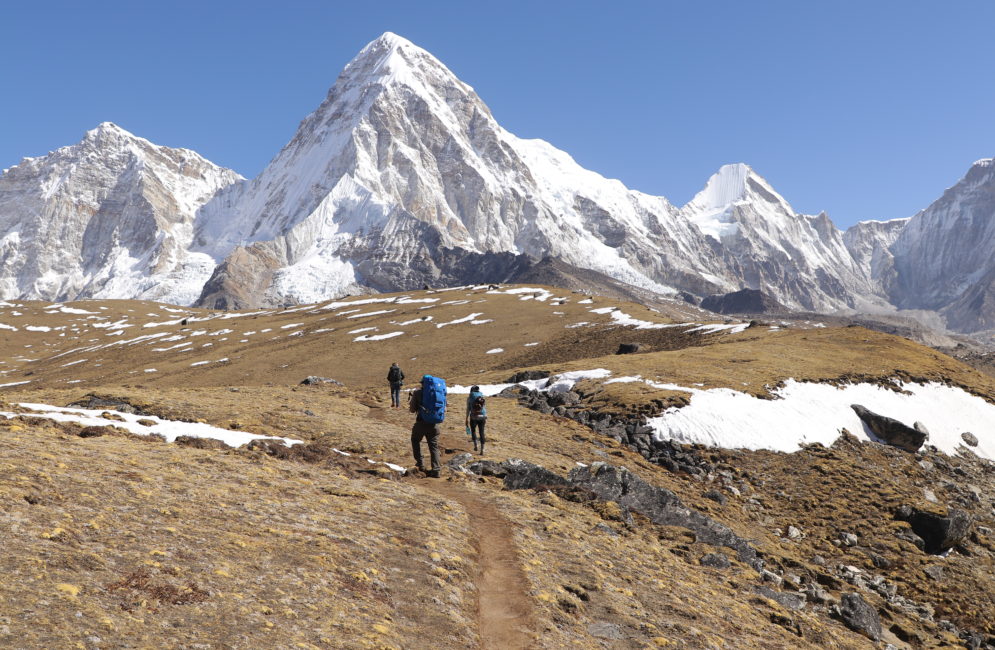
Short overviews of Trekking in Nepal
If you have ever planned on going trekking in a foreign country, you have crossed paths with Nepal while trying to make a decision. There is a reason Nepal is known as the “trekker’s paradise.” The mythical beauty this land owns is unparalleled. With an array of natural diversity and cultural beauty, trekking in Nepal surpasses anyone’s expectations.
Nepal is a small country located in Asia. Despite its tiny area of 147,516 square kilometers. The country has a diverse landscape structure from its southern plains to its northern mountains. This is what makes Nepal fascinating. The country is densely populated by a family of mountains that consists of a number of the highest peaks in the world.
Sheltered by these magnificent peaks are an abundance of geographical and biological diversity. Lush green hills, abundant forests, quaint glacial lakes, gushing rivers, and the mixed flora and fauna decorate the paths everywhere.
Along with comes the cultural beauty of the country. With over a hundred ethnic groups, the aesthetic touch enhances the overall experience of your journey in Nepal. Together, these factors make trekking in Nepal an unmatched adventurous experience.
For those who plan to do trekking in Nepal, the hardest challenge may be choosing where to go, Here is the detailed information about all around treks Nepal. With so many options to choose from, one may simply get overwhelmed. Each trek has a unique course which sets for a new adventure.
Amongst hundreds of treks, below, we have 28 of the most popular treks. These choices are some of the most selected treks by travelers from all over the world. Scattered in different areas of Nepal, you can find the appropriate trek according to the region you want to travel to.
List of Trekking in Nepal
- Chisapani Nagarkot Trek – 3 Days
- Ghorepani Poon Hill Trek – 4 Days
- Everest Short Trek – 5 Days
- Mardi Himal Base Camp Trek – 6 Days
- Pikey Peak Trek – 7 Days
- Annapurna Base Camp Trek – 7 Days
- Everest View Trek – 7 Days
- Langtang Valley Trek – 8 days
- Khayar Lake Trekking – 8 Days
- Gosaikunda Lake trek – 8 days
- Annapurna Base Camp Trek With Ghorepani – 9 Days
- Gokyo Ri Trek – 11 Days
- Annapurna Circuit short Trek – 12 days
- Annapurna Circuit Trek – 15 Days
- Everest Base Camp Trek (EBC Trek) – 16 Days
Restricted Area Trekking in Nepal
- Tsum Valley Trek – 13 Days
- Lower Dolpo Trek – 15 Days
- Manaslu Circuit Trek -16 Days
- Nar Phu Valley Trek – 20 Days
- Manaslu with Tsum Valley Trek – 20 Days
- Upper Dolpo Trek – 24 Days
- Kanchenjunga Circuit Trek -24 Days
Most Challenging Trekking in Nepal
- Tilicho lake trek – 13 days
- Amphulaptsa Pass Trek – 13 Days
- Everest Chola Pass Trek – 15 Days
- Dhaulagiri Round Trek – 15 days
- Makalu Base Camp Trek – 19 days
- Everest Three High Passes Trek – 20 Days
Details Information about Trekking in Nepal
1. Chisapani Nagarkot Trek – 3 Days
Introduction
Not everyone who wants to trek has time for long journeys. For such travelers who are enthusiastic about trekking but are restricted by time, Chisapani Nagarkot trek is the most appropriate option. Located in the outskirts of Kathmandu valley, this short three-day trek is a viable option for those who are on a tight schedule.
The Chisapani Nagarkot trek is one of the nearest treks to Kathmandu valley. It takes you on the trails that run through the lush hills that surround Kathmandu. Though you are not very far from the city, you can feel the rural vibes from the countryside. Simultaneously, you can also enjoy magnificent mountain views, lush flora, and the local culture.
As the trail continues, you visit one of the most popular tourist destinations of Nepal, Nagarkot. This hilltop vantage point is known to provide excellent sunrise/sunset views. On a clear day, you can spot several prominent peaks from here.
Best Season to Go
This trek is open all year round. However, you must be aware of what to expect during certain seasons. During spring and autumn, which occur from March to May and August to November, the weather is clear, and the temperature is warm. You can enjoy a pleasant atmosphere and minimal chances of rainfall.
Trekking here in summer is also possible, but heavy rain might make it difficult to enjoy a good time. Winter trekking is also possible only if you are ready to bear the cold.
Highlights of the trek
- Explore the Shivapuri watershed and wildlife reserve
- Pass by various local communities and meet the ethnic people
- Witness amazing panoramic views of mountains such as Manaslu, Ganesh Himal, Langtang Himal, Gaurishankar Himal, and even Everest in a far distance
- Mesmerizing sunrise/sunset view from Nagarkot View tower.
- Experience the natural beauty of Nepal within a short period and at a short distance
Chisapani Nagarkot Trek Cost
The Chisapani Nagarkot Trek is a three-day trip. It costs around $300 per person. The package for these costs includes accommodation, transportation charges, meals, etc.
Chisapani Nagarkot Trek Difficulty
The Chisapani Nagarkot Trek is an easy level trek suitable for all types of trekkers. You will walk about 4 to 5 hours per day, and the trails are comfortable and well-built.
Chisapani Nagarkot Trek Map
The Chisapani Nagarkot trek starts from Sundarijal. You walk uphill alongside the water pipes that lead you to the Chisapani via Mulkharka. You spend the night at Chisapani and head out to Nagarkot the next day. You walk through Kattike Bhanjyang, and the trail finally ends in the hill town of Nagarkot.
The following day, you will begin by watching the mesmerizing view of the sunrise and a warm breakfast. You will then trek to Tilkot Resort and drive to Kathmandu. The trip ends as you drive back to Kathmandu.
2. Ghorepani Poon Hill Trek – 4 Days
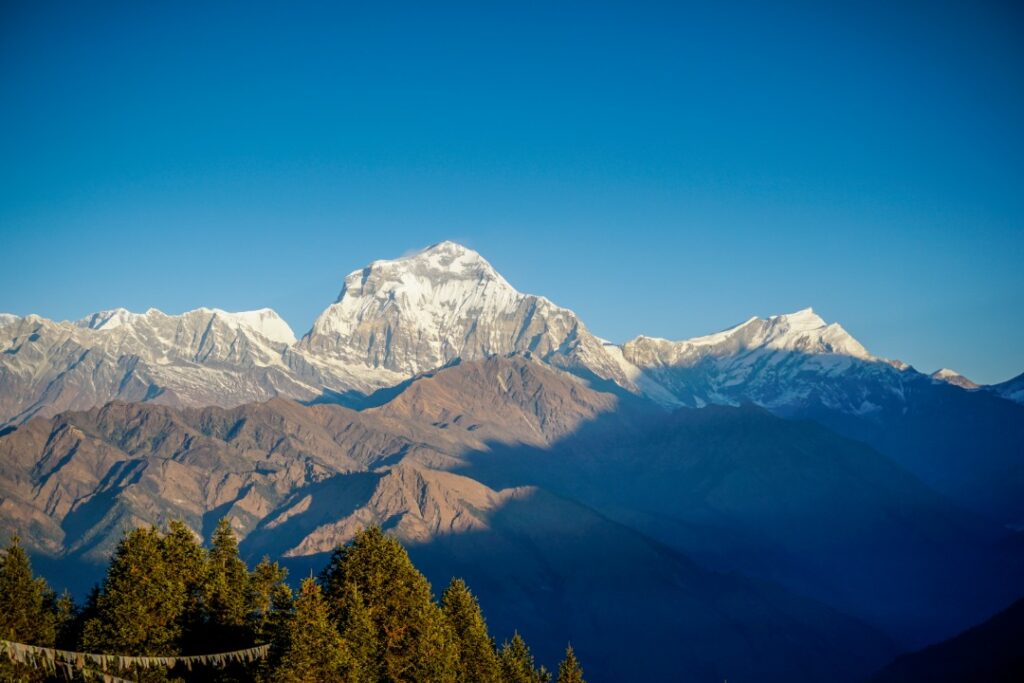
Introduction
Ghorepani Poon Hill trek is one of the most comfortable yet most rewarding treks of Nepal. This short four-day trek takes you to the heart of the Annapurna region, where natural beauty is in abundance. For those who are running short on time but want to get a taste of the Himalayas, the Ghorepani Poon Hill Trek is the perfect option.
This trek takes you to one of the best spots, Poon Hill, to view the Annapurna ranges. You traverse across lush hills, rivers, forests, and mountains. Decorated with vibrant plants such as Rhododendrons, Bamboos, and oaks, you will come across a diverse array of flora and fauna.
You will also visit various ethnic settlements of the Gurung and Magar tribes of the Kaski district.
Best Season to Go
The best time to do this trek is around the autumn (August to November) and spring (February to May) seasons. The weather in the Annapurna region during these seasons remain clear with moderately warm temperatures. These seasons also have the lowest rate of precipitation.
The views are the clearest during these seasons as there is little to no rainfall. The dry trails also accommodate a safe journey. Summer, on the other hand, brings torrential downpour. Leeches and wet surfaces can make trekking difficult. Winter can be freezing in some places. Nevertheless, Ghorepani Poon Hill trek is possible throughout the year.
Highlights of the trek
- Traverse through the diverse terrain of Annapurna region
- Explore the dense flora and fauna of the Annapurna sanctuary
- Visit various rural villages and get acquainted with the Gurung and Magar communities
- Witness fantastic sunrise views over the Annapurna ranges consisting of mountains such as Dhaulagiri I, Tukuche, Nilgiri, Annapurna South, Annapurna I, Hiunchuli, Machhapuchhre, Lamjung Himal, and Manaslu.
Ghorepani Poon Hill Trek Cost
This trek costs around $380 per person. The cost covers chargers for your hotel/lodge rooms, meals, transportation costs, and similar service costs.
Ghorepani Poon Hill Trek Difficulty
The Ghorepani Poon hill trek is an easy trek. It is suitable for all types of trekkers, even for beginners. However, you must physically prepare yourself to be able to perform well on the trek and not face health issues.
Ghorepani Poon Hill Trek Map
The Ghorepani Poon hill trek begins as you travel to Pokhara from Kathmandu. Pokhara is the gateway to almost all treks in the Annapurna region. From Pokhara, you take a short drive to Nayapul and commence trekking towards Ulleri. This day is the most challenging among the four days as you are to ascend a steep hill.
From Ulleri, you make your way to Ghorepani. The following morning, you will hike to Poon Hill in the early morning to watch the sunrise. After a while at Poon Hill, you descend back towards Tadapani. For the final day, you trek towards Kyumi and drive back to Pokhara.
3. Everest Short Trek – 5 Days
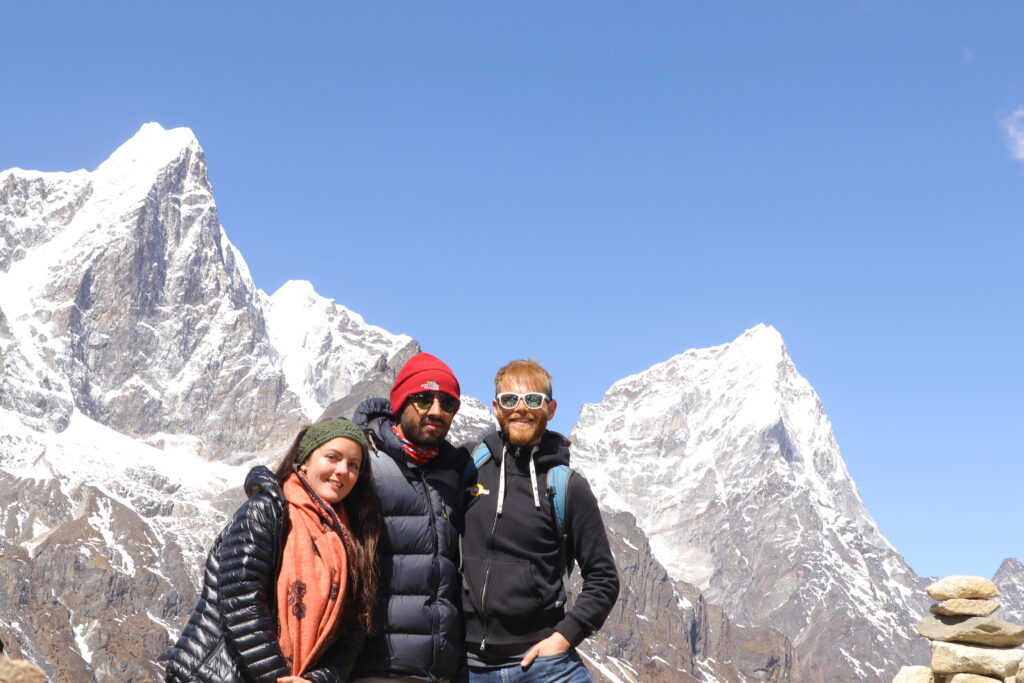
Introduction
One of the most majestic mountains to see in Nepal is the Everest. If you are planning to trek in Nepal, you sure have kept Everest in one of your priority lists. The Everest Short trek is one of the shortest and most adventurous journeys possible in Nepal. This five-day trip is enough for you to explore the mythical Khumbu region (Everest region).
Best Season to Go
The Everest Short trek takes you to one of the most extreme places in Nepal. The mountainous region is icy almost throughout the year. Thus, you should carefully plan and prepare for this trek.
The best time to go for this trek is during spring (March to May) and autumn (August to November). These months have the most favorable weather for a pleasant trip. Clear weather and warm temperatures are the two most important factors that make these seasons suitable for trekking. Winter is freezing with subzero temperatures in most areas, and summer has high precipitation.
Highlights of the trek
- Experience the thrilling flight over the diverse region of Khumbu
- Visit the ancient Tibetan Buddhist Monastery at Tengboche
- Traverse across the Himalayan biodiversity and witness the mountainous wildlife and vegetation
- Get acquainted with the hospitality of Sherpa People and their unique culture and tradition.
- Witness marvelous views of Mt. Everest, Mt. Lhotse, Mt. Tawache, and Mt. Nuptse, Mt. Ama Dablam, Mt. Thamserku, and other neighboring peaks.
Everest Short Trek Cost
The cost of this trek is around $820 per person. Costs include accommodation at teahouses, meals, airfares, and additional services necessary for the trip.
Everest Short Trek Difficulty
The Everest Short trek is moderately difficult. It will require you to walk around 5 to 6 hours per day. It is suitable for those who have some experience with trekking and are physically able to cover the walking distance. For those who desire a journey easier than the Everest Base Camp trek, the Everest Short trek is the right option.
Everest Short Trek Map
Like many other short treks, the Everest Short trek is also suitable for those who have time constraints. The trek takes five days to complete. Nonetheless, it gives you a solid impression of the Khumbu region.
The trek begins with a thrilling flight from Kathmandu to Lukla. This flight alone gives you a good overview of the Khumbu region. As enthralling as the flight is, the adventure that is ahead of you is no less. From Lukla, you begin trekking towards Phakding. These are the lowest areas of the Khumbu region. You will see some greenery while you trek in this area.
From Phakding, you head towards Namche Bazaar. Namche Bazaar is known as the gateway to Everest. This lively city has its charm. You will spend an additional day here with the mountainous people and explore the vivid town.
The following day, you resume trekking towards Tengboche. Once you reach this village, you can pay a visit to the famous Tengboche monastery. Tengboche is the spiritual hub of the Khumbu region. Possessing immense religious value, this place gives a refined touch to the journey. From Tengboche, you head towards Monjo and, finally, head back to Lukla on the last day.
4. Mardi Himal Base Camp Trek -6 days
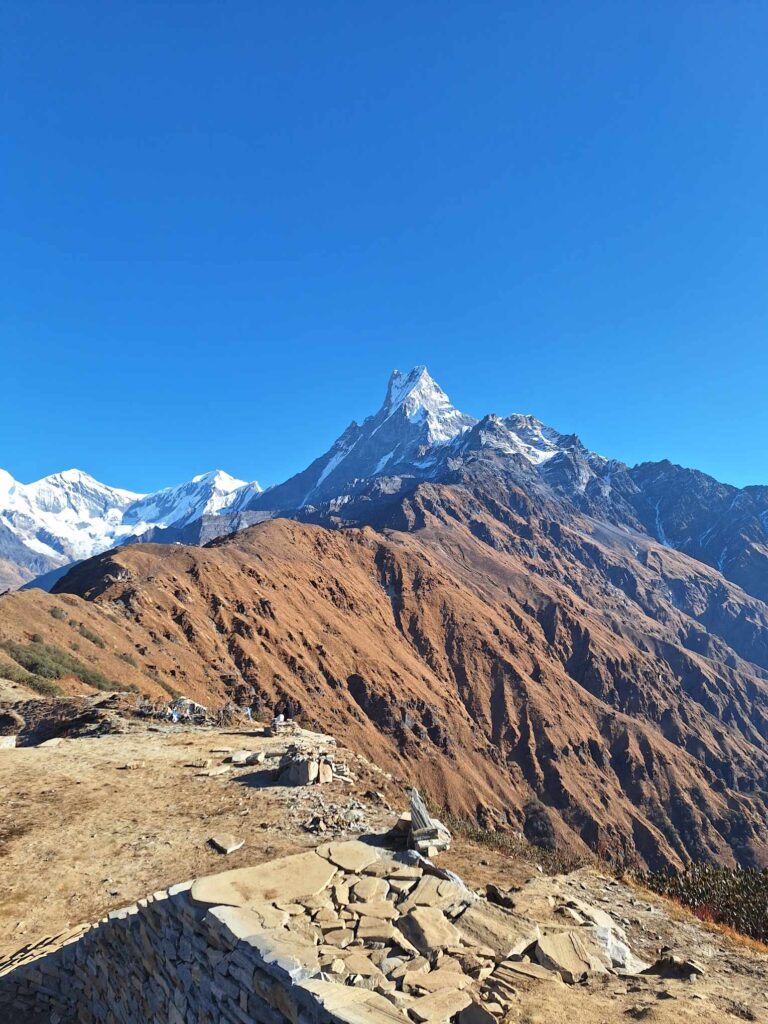
Introduction
The Annapurna region is one of the most beautiful regions to trek in Nepal. It is also a popular choice for trekkers who seek to explore the Himalayas. For trekkers, there are numerous options to choose from in the Annapurna region. One outstanding option is the Mardi Himal trek.
Situated towards the east of Annapurna, Mardi Himal is a hidden gem nestled below the shadows of Machhapuchhre. The trails are offbeat and have only recently been opened to trekkers. Moreover, this part of the region is still in its untouched state.
The lowlands are densely covered with lush forests. These forests are home to abundant biodiversity housing an array of flora and fauna. Accompanied by gushing rivers, hills, cliffs, and mountain ranges, you also come across scattered settlements of mostly Gurung and Magar communities during the trek.
Unlike most of the popular treks of the Annapurna region, the Mardi Himal Base Camp trek is a lesser-traveled route. Thus, if you seek to trek in isolation, the Mardi Himal Base Camp trek is highly recommended for you.
Best Season to Go
Like most other conventional treks of Nepal, Mardi Himal Base Camp trek is also best done during spring (March to May) and autumn (August to November). These months have the most evident weather, along with the most favorable temperatures.
Clear weather accommodates fantastic views and has the least chances of disrupting the schedule planned for the trek.
Highlights of the trek
- Witness dramatic change of landscapes from tropical woodlands to alpine vegetation and dry mountainous region
- Visit various rural settlements of the Gurung and Magar tribes of the Annapurna region
- Travel on the off-beaten trails while enjoying the solitude
- Get amazing views of the mountain landscapes including peaks such as Mardi Himal, Machhapuchhre, Annapurna South, and Hiunchuli
- Enjoy a close encounter with nature as you explore the rich biodiversity that extends from the lowlands to the mountainous region
Mardi Himal Base Camp Trek Cost
The total cost for this trek is $450 per person. You will stay at teahouses during the trek where meals are also provided. The cost includes these charges along with transportation costs.
Mardi Himal Base Camp Trek Difficulty
This six-day trek is a trek that demands physical fitness and knowledge about trekking in high altitudes. It is suitable for those who have a little or more experience trekking in the Himalayas and are capable of walking long distances.
Mardi Himal Base Camp Trek Map
The Mardi Himal Base Camp trek commences as you trek towards Kande-Deurali from Pokhara via Australian Camp. Next, you will head towards Jungle Camp. From Jungle Camp, you will ascend towards Low Camp.
Slowly, you will walk towards the High Camp. The next day, you will hike up to the Mardi Himal Base Camp. After spending some time here, you are to make it back to High Camp the very day. From High Camp, you descend towards Siding and finally, Lumre on the last day. From Lumre, you drive back to Pokhara, where the trip ends.
5. Pikey Peak Trek – 7 Days
Introduction
Nepal is known as the land of mountains, offering an excellent platform for mountaineering activities. One of the most exciting activities to do here is the Pikey Peak trek. Located in the Everest region, the Pikey peak trek was only recently opened for trekking. This trek offers a great way to explore this dramatically diverse mountainous region of Nepal.
Beneath the mountains are numerous natural attractions to explore. Indeed, Khumbu has become one of the most popular trekking destinations over the years for its beautiful aspects. Trekking here also gives you away into the Himalayan biodiversity. Witness some fantastic mountainous flora and fauna like the Himalayan Thar, Danphe, Snow leopard, Red panda, etc.
Populated by mostly Sherpa people and other tribes of Tibetan descent, the Khumbu region offers an insight into the mountainous lifestyle.
Best Season to Go
The best time to do the Pikey peak trek is during the spring and autumn seasons. These seasons occur from March to May and August to November, respectively. Various factors play a significant role in making these seasons comparatively better for this trek than the other months of the year.
These factors include clear weather, warm temperature, low rain/snow, dry trails, etc. All of these factors make trekking more enjoyable and safer. During the rest of the year, the region experiences heavy rainfall, snowfall, and freezing temperatures. Thus, if you are planning to go for the Pikey peak trek, it is best to choose dates within the given months above.
Highlights of the trek
- Traverse across the quaint Himalayan biodiversity
- Visit various villages and get to know about the unique culture and traditions of the Sherpa people.
- Hike up to the summit of the Pikey peak
- Witness breathtaking views of mountains such as Everest, Kanchenjunga, Dhaulagiri, Lhotse, Makalu, etc.
- Visit the historic Thuptenchholing Gompa
Pikey Peak Trek Cost
This seven-day trek costs around $550 per person. The cost is inclusive of accommodation, meals, transportation, guides, porters, climbing equipment, etc.
Pikey Peak Trek Difficulty
The Pikey peak trek is easy. You will walk about 5 hours a day on average. Physical preparation and mental awareness can help you have a safer and enjoyable trek.
Pikey Peak Trek Map
The Pikey Peak Trek is a seven-day journey that takes you to the majestic Khumbu region. The journey begins as you hop on a scenic drive from Kathmandu to Dhap Bazaar. From here, the trek commences towards Jhapre. The next day, you trek to the Pikey Base Camp.
From the base camp, you will make the summit starting early the following morning. You will descend towards Junbesi on the same day. From Junbesi, you will trek back to Phaplu and drive to Kathmandu.
6. Annapurna Base Camp Trek – 7 Days
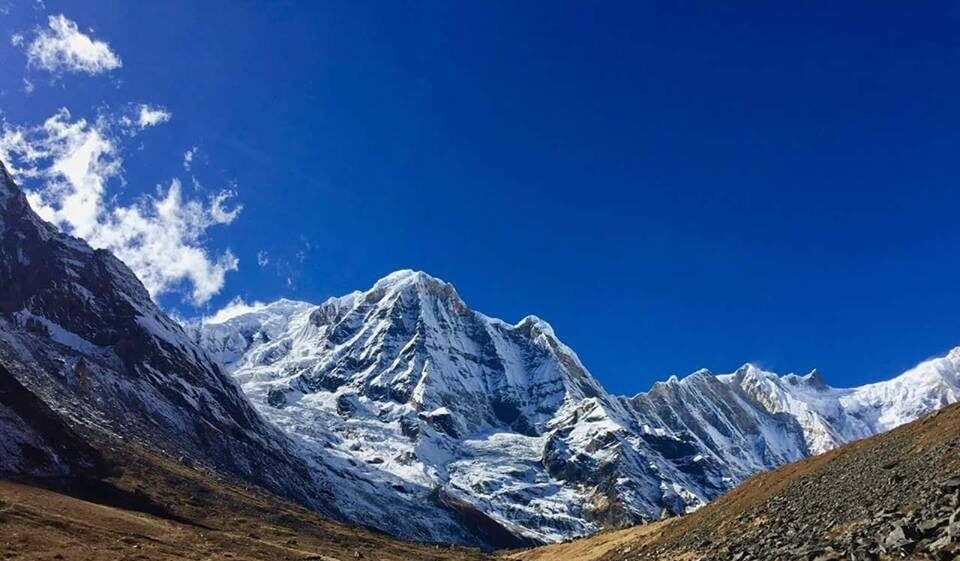
Introduction
The Annapurna has long been one of the most famous mountains in Nepal. This beautiful massif has garnered the attention of trekkers from all over the world. Lying in the north-central parts of Nepal, thousands of trekkers flock this region to discover the beauty it holds.
The 7 days Annapurna Base Camp trek, among many others in the region, is the most popular choice. It’s short and easy nature allows for an enjoyable journey without many challenges. The richness of its natural and cultural diversity also makes it one of the most exceptional trekking experiences of Nepal.
Travelers indulging in this journey ought to witness amazing landscapes along with the glorious mountains, diverse flora and fauna, and culturally rich villages. The main objective of the trip is to reach the base camp of the Annapurna. Annapurna is the world’s tenth highest mountain at the height of 8,091 meters.
Best Season to Go
You can do the Annapurna Base Camp trek any time of the year. However, autumn and spring are the best time for this trek. Both these seasons are dry and offer clear skies. The temperature is moderate and not too cold. Autumn forests are vivid with the drying leaves, whereas spring brings blooming colors with exotic flowers of red and white Rhododendrons.
Monsoon, on the other hand, experiences heavy rainfall. You will come across leeches and mosquitoes during this season. Rain also raises the possibility of landslides and slippery roads. Winter is also a possible option, but the temperature is freezing. However, dry air and clear sky offer the best visibility.
Highlights of the trek
- Spectacular close up views of mountains such as Annapurna, Machhapuchhre, and Dhaulagiri
- Traverse through the dense jungles that are filled with lush flora and fauna
- Visit various settlements of the Gurung and Magar tribe
- Witness the world’s deepest gorge, Kali Gandaki
- Reach the foot of the world’s tenth tallest mountain at Annapurna Base Camp
Annapurna Base Camp Trek Cost
The cost of this trek is $585 per person. This package includes accommodation, meals, transportation costs, and similar services managed by the tour operator.
Annapurna Base Camp Trek Difficulty
As mentioned earlier, the Annapurna Base Camp trek is a moderate trek. Nevertheless, the trek is very rewarding in terms of natural and cultural exposure to the real beauty of Nepal. During this trek, you will walk around 6 to 7 hours per day. If you have just begun trekking, you might find it difficult to keep up as it can get tiring at times.
Annapurna Base Camp Trek Map
The Annapurna Base Camp Trek is suitable for those who seek adventure, natural beauty, and an enjoyable trip with less hassle. The trip begins from the gateway of the Annapurna region at Pokhara. You hop on a scenic drive from Pokhara to Nayapul, where you start the trek. Your first destination is Chhomrong.
From Chhomrong, you will trek to Dovan via Bamboo. The following day is the most exciting part of the journey as you reach Machhapuchhre Base Camp. The next day, you trek to Annapurna Base Camp. For your return, you will descend to Bamboo, Jhinu danda, Kyumi, and finally, drive to Pokhara.
7. Everest View Trek – 7 Days
Introduction
As the name suggests, the Everest View Trek presents you with a thrilling journey to view the magnificence of Everest. Being the highest mountain on Earth, witnessing Everest at least once in a dream of many travelers. For those who want a comfortable yet rewarding journey, Everest View Trek is the right option.
The Everest View Trek takes you to the laps of the magnificent Mount Everest, which is the Khumbu region. Although a journey to Everest sounds challenging and delicate, the Everest view trek is an easy way to experience the beauty of Everest and the Khumbu region.
In 7 days, you will explore the major areas of the Khumbu region and witness several mountains, including Everest. The Everest View trek goes through paths that traverse across the quaint alpine vegetation, mountainous settlements, and a unique bundle of the Himalayan biodiversity.
Best Season to Go
The best time to do this trek is during spring and autumn seasons. These seasons generally occur from March to May and August to November, respectively.
The Everest region has cold temperatures throughout the year, but autumn and spring seasons have comparatively warmer temperatures. Thus, doing the Everest view trek during winter can be a severe challenge and needs extra preparations accordingly.
On the other hand, trekking in Nepal, summer/monsoon is also difficult due to heavy rainfall and risks of landslides and avalanches. To be on the safer side, spring and autumn pose as the best time to do this trek. The weather is clear almost throughout the seasons, with the least amount of precipitation. Skies are also bright, offering the best views of the landscapes. Dry weather and dry trails together make the trip safer and more comfortable.
Highlights of the trek
- Capture the geographical beauty of Nepal as you enjoy the thrilling and scenic flight to Lukla
- Explore the Himalayan biodiversity and observe the diverse flora and fauna
- Witness amazing views of mountains such as Everest, Nuptse, Thamserku, Lhotse, Ama Dablam, etc.
- Visit the settlements of Sherpa people and take a look at their mountainous lifestyle
- Visit one of the world’s highest located hotels at 3,990 meters; the Everest view hotel.
Everest View Trek Cost
The Everest View Trek costs about $870 per person. The cost includes lodging, meals, and transportation/flight charges.
Everest View Trek Difficulty
The Everest View Trek is a short and moderate trek to explore the Everest region. This trek does not require much experience but demands at least a minimal level of fitness. You will walk around 5 hours a day on average. To avoid getting tired and feeling pain in your legs, you can try exercising at home before the trek.
Everest View Trek Map
The Everest View Trek begins with a scenic flight to Lukla. This thrilling flight soars above the diverse landscapes that decorate the transition of the Hilly and Himalayan regions. From Lukla, you will commence the trek towards Phakding. After spending a night at Phakding, you will head on to Namche Bazaar.
Early the next morning, you will visit Tengboche Monastery. After a warm breakfast, you will return to Namche via Khumjung Village. The next day, you will return to Lukla and take a flight to Kathmandu.
8. Langtang Valley Trek – 8 Days
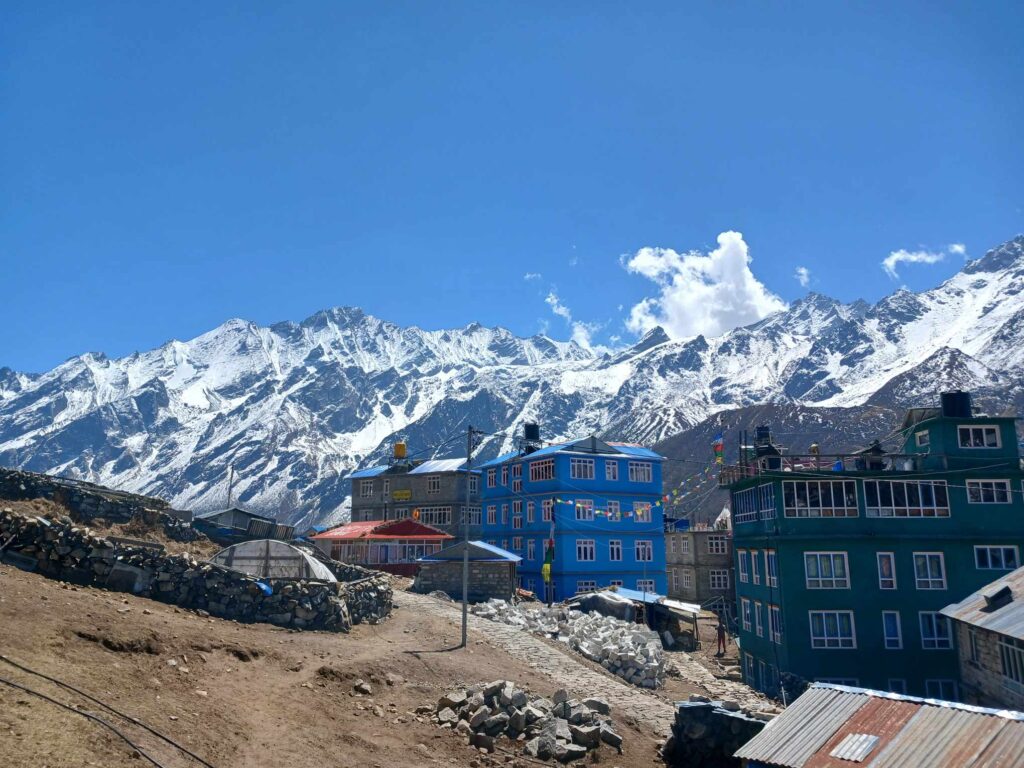
Introduction
One of the closest Himalayan regions to the capital city of Kathmandu is the Langtang region. Located about 70 kilometers of Kathmandu, Langtang is the nearest and most easily accessible Himalayan region of the entire north.
Although Langtang is at a close distance to the capital city of Nepal, you will find the place in its pristine form away from modernity. The Langtang region has been able to keep intact its natural and cultural origins and remain one of the most beautiful and isolated regions of Nepal.
The Langtang Valley Trek offers a fantastic way to explore this beautiful region and enjoy viewing the glorious mountains. With over 70 and more glaciers, Langtang is also known as the valley of glaciers. The Langtang region incorporates the Himalayan beauty through its unique biodiversity, culturally rich communities, diverse geography, crystalline lakes, and the high mountains.
Best Season to Go
The best time to do the Langtang valley trek is autumn (August to November) and spring (March to May). During these seasons, the weather and temperature are the most pleasant. Clear skies offer marvelous views of the mountains and glaciers.
The forests are also blooming with colorful rhododendron flowers, and trekking, in general, is more enjoyable. However, this doesn’t mean trekking during other seasons is not possible. After autumn ends, the following months are freezing and have heavy snowfall. Summer coinciding with monsoon brings heavy rainfall. Leeches also give you a hard time while trekking.
In conclusion, trekking in Nepal these two seasons is more difficult and is only suitable for those who can withstand the challenge.
Highlights of the trek
- Visit the Langtang National Park and explore the Himalayan biodiversity
- Get acquainted with the Tamang people of the scattered settlements of Langtang
- Witness breathtaking views of Langtang Lirung, Ganesh Himal, Langtang Ri, Tserko Ri, and Dorje Lakpa
- If you are lucky, you might spot rare animals such as Red Panda, Himalayan Thar, wild deer, falcons, and others
Langtang Valley Trek Cost
The cost of the Langtang Valley trek is $550 per person. The cost includes transportation, accommodation, meals, guides and porters, trekking and park permits, and taxes/official charges.
Langtang Valley Trek Difficulty
Although you will walk about 5 to 6 hours a day, the level of this trekking is moderate. It is suitable for all types of trekkers, including beginners.
Langtang Valley Trek Map
The Langtang Valley Trek begins with a drive to Syabrubensi from Kathmandu. Although the distance is short, the drive is longer as the roads travel through the winding pattern along the hills. Trekking begins from Syabrubensi as you head towards Lama Hotel. From Lama Hotel, you head to Langtang valley.
The next day, you will trek to Kyanjin Gompa. While at Kyanjin Gompa, you will hike to Kyanjin Ri. The following day, you will head back to Lama Hotel and Syabrubensi the day after. You drive back to Kathmandu from Syabrubensi on the final day.
9. Khayar Lake Trek – 8 Days
Introduction
Numerous treks in Nepal showcase the wilderness of the Himalayas. But there is no other trek better than Khayar Lake Trek that presents such a unique experience. The Khayar Lake trek is a journey up close to the wilderness that drives you to the heart of the Annapurna region.
The Khayar Lake trek is an offbeat trek that passes through diverse landscapes and rural villages of the Annapurna region. You can enjoy great views of the Annapurna ranges, Khopra ridge, and the sacred Khayar Barahi Lake, which is located 4,500 meters of altitude. You can visit Khayar Lake to take part in the Yak blood drinking festival as well.
Best Season to Go
The best time to do this trek is around autumn and spring. The weather is clear almost throughout these seasons, and the temperature is warm. These given conditions accommodate a pleasant atmosphere for trekking.
You can also do this trek in the summer/monsoon or winter seasons, but various factors make it a difficult journey. Cold weather, rain, and snowfall, leeches, and mosquitoes are certain factors that make these two seasons lesser suitable for travel.
Highlights of the trek
- Witness marvelous sunrise views over the mountains, such as Annapurna, Dhaulagiri, Machhapuchhre, Hiunchuli, etc.
- Visit various ethnical communities of the Gurung tribes
- View the tranquil sacred lake of Khayer
- Get acquainted with the rich natural diversity and the array of varying flora and fauna
- Travel across natural hot springs and waterfalls on the course of the trek.
Khayar Lake Trek Cost
This trek costs around $750 per person, which includes the costs of accommodation, meals, and transportation.
Khayar Lake Trek Difficulty
The Khayer lake trek is an eight-day trek. The level of difficulty for this trek is quite low, as it is a pretty easy trek. Thus, it is suitable for all types of trekkers.
Khayar Lake Trek Map
You begin with a drive to Kyumi from Pokhara. Trekking starts from Kyumi as you head towards your first destination, Ghandruk. Next, you will trek to Tadapani. From Tadapani, you will follow the route: Dobato, Bayeli, Khopra Hill, Khayar Lake, Tatopani, and back to Pokhara.
10. Gosainkunda Lake trek – 8 Days
Introduction
The Gosainkunda Lake Trek takes you to the beautiful valley of Langtang. The valley is embedded with several azure-colored lakes and offers exceptional adventure for those who seek.
The Gosainkunda Lake Trek is a journey to the pristine glacial lakes. But this does not entirely define it. This trek comprises the entire natural and cultural beauty of the Langtang National Park and the many ethnic settlements of the region’s villages.
The Langtang region is a place of true beauty. The park boasts the region’s natural splendor. Within the lush jungles, you can find diverse floras and faunas. While walking along with the rich forests of rhododendron and bamboo, you may encounter the rare Red panda! The ethnic settlements are mostly populated with Tamang and Sherpa people.
The major highlight of the trek is the tranquil lake of Gosainkunda. Once you are here, it is not just a deed of natural exploration but a religious journey that rids you of your sins. Gosainkunda Lake is a famous sacred site for Hindus and Buddhists.
Best Season to Go
The best time to do the Gosainkunda Lake trek is during spring (March to May) and autumn (August to November). These seasons generally offer clear weather, warm temperatures, and the least amount of precipitation.
On the other hand, summer has a high rate of rainfall, and risks of avalanches and landslides increase. Similarly, winter has a substantial amount of snowfall with severe temperatures.
Highlights of the trek
- Explore the glacial valley of Langtang
- Travel through Nepal’s second-largest national park, the Langtang national park. Witness fantastic flora and fauna within its premises
- Get spectacular views of mountains such as Langtang Lirung, Ganesh Himal, Langtang Ri, Tserko Ri, and Dorje Lakpa
- Visit the sacred lake of Gosainkunda and get rid of your sins in this spiritual journey
Gosainkunda Lake Trek cost
The average cost for this trek is $650 per person. Within this cost, you will get facilities for accommodation, meals, guides and porters, transportation, and trekking permits.
Gosainkunda Lake Trek difficulty
The timing of your trek also plays a significant role in the complexity of the trek. The Gosainkunda trek is a moderate trek that requires at least a minimal level of physical fitness. Trekking here in spring and autumn can be more relaxed and safer due to dry trails and the opposite during winter and summer.
Gosainkunda Lake Trek map
The Gosainkunda Lake trek begins with a scenic drive to Dhunche from Kathmandu. Trekking starts as you head towards the first destination, Chandanbari. From Chandanbari, the trail follows the route: Gosainkunda lake, Ghopte, Kutumsang, Chisapani, Sundarijal, and finally back to Kathmandu.
11. Annapurna Base Camp Trek With Ghorepani -9 Days
Introduction
One of the fascinating aspects of trekking in Nepal is that adventure is never limited here. With numerous adventurous treks to choose from, Nepal is indeed the “trekker’s paradise. “You can also alter routes in treks to include other aspects that you wish to explore.
Consequently, the Annapurna Base Camp trek is one of such journeys that enhances the trekker’s experience.
The Annapurna Base Camp trek with Ghorepani is a combination of two beautiful treks that explore the heart of the Annapurna region. The mainstream adventure route of Annapurna Base Camp and the remoteness of the Ghorepani trek together form a fantastic journey.
Best Season to Go
This trek is the most suitable during autumn or spring. These seasons generally occur around August to November and March to May, respectively. These months have the lowest chances of rainfall and offer clear weather with empty skies. Views are the best during these months.
On the other hand, traveling during summer can be troublesome as heavy rainfall occurs in many parts of the region. Winter as well can be challenging as the temperature becomes freezing.
Highlights of the trek
- Reach the foot of the world’s 10th tallest mountain.
- Explore the rich diversity of the terrain of the Annapurna region.
- Traverse alongside the dense flora and fauna of the Annapurna sanctuary.
- Get acquainted with the local villages and the Gurung and Magar communities.
- Witness amazing views of mountains such as Dhaulagiri I, Tukuche, Nilgiri, Annapurna South, Annapurna I, Hiunchuli, Machhapuchhre, Lamjung Himal, and Manaslu.
Annapurna Base Camp Trek With Ghorepani Trek Cost
The cost of the Annapurna Base Camp trek with Ghorepani is $640 per person. You will be provided with accommodation and meals for the trip, transportation, guides and porters and trekking permits.
Annapurna Base Camp Trek With Ghorepani Trek difficulty
This nine-day trek is moderate. You will walk around 6 hours every day. Thus, you must be physically prepared to take the load of walking for the trek.
Annapurna Base Camp Trek With Ghorepani Trek Map
The Annapurna Base Camp trek with Ghorepani begins from Pokhara. You commence the trek by heading towards Ulleri. From Ulleri, you head towards Ghorepani. You will trek to Tadapani via Poon hill to view the Annapurna ranges.Then, you will traverse the route that goes along: Sinuwa, Deurali, Annapurna Base Camp, Bamboo, Jhinu danda, Kyumi, and finally back to Pokhara.
12. Gokyo Ri Trek – 11 Days
Introduction
One of the best alternative treks to the famous Everest Base Camp is the Gokyo Ri Trek. Offering exceptional views of the Himalayas along with the quaint natural beauty of the Khumbu, The Gokyo Ri Trek is a beautiful way to rejoice the vast Everest region.
For those who seek isolation during travel, this trek is a perfect choice. The major highlight of the trek is the summit of Gokyo Ri. You witness breathtaking panoramic views of some of the world’s highest mountains, including Everest, Lhotse, Cho Oyu, Makalu, and many more.
The Gokyo Ri trek begins with a scenic flight from Kathmandu to Lukla. Then, the trek commences as the trail traverses through famous Sherpa villages like Phakding, Namche, and Dole, all the way up to Gokyo Valley.
You summit the Gokyo Ri and reach the optimum point of the journey. If you wish, you can also combine the trails of the Everest Base Camp trek into this journey and enhance your experience.
Best Season to Go
Autumn (September to November) and spring (March to May) are the most favorable time to do the Gokyo Ri Trek. Weather conditions during autumn and spring are stable, and the temperature is warm, accommodating an excellent atmosphere for trekking. The skies are also clear of clouds during these seasons, offering unobstructed views of the mountains.
In contrast, during the winter (December to February) season, snow covers almost the entire course of the trail. In extreme cases, snowfall may even block several areas and routes. From late February to early March, the Gokyo Lake is completely frozen due to extreme temperatures.
Thus, winter trekking can be very challenging. Similarly, monsoon (June to August) is also least suitable as the trails are wet and slippery. This makes trekking difficult and raises risks for trekkers.
Highlights of the Trek
- Travel on the off-the-beaten-path in isolation while enjoying the beauty of the Everest region.
- Reach the vantage point of Gokyo Ri and witness fantastic panoramic views of Everest, Lhotse, Ama Dablam, Cho Oyu, etc.
- Witness the turquoise Gokyo Lakes ashore and enjoy its pristine ambiance.
- Trek through famous villages of Khumbu and meet the mountainous people.
Gokyo Ri Trek Cost
The Gokyo Ri trek costs around $1130 per person. It covers the cost of your permit, transportation, accommodation, guide, porter, and similar services managed by your travel company.
Gokyo Ri Trek Difficulty
The Gokyo Ri trek is moderate. The trails are off-beaten, and you will walk around 5 to 6 hours per day. It is suitable for people who have been on long treks at least once.
Gokyo Ri Trek Map
You will start the trek with a scenic flight to Lukla from Kathmandu. In the next ten days, you will follow the route that goes along Phakding, Namche Bazaar, Phortse village, Machhermo, Gokyo valley, Gokyo Ri, Dole, Namche Bazaar, Lukla, and finally back to Kathmandu.
13. Annapurna Circuit short Trek – 12 Days
Introduction
The Annapurna Circuit short trek is one of the most popular treks in Nepal. But not everyone has the time or resources for this long journey. For those who wish to do the Annapurna circuit trek, but in a short time, the Annapurna circuit Short Trek is the perfect alternative.
The Annapurna circuit short trek provides you with the same fascinating natural and cultural beauty the standard trek does but in a shorter period.
The Annapurna Circuit Short Trek covers a great circumference around the heart of Annapurna. The trail encompasses both sub-tropical and alpine vegetation. Traveling here takes you close to nature one step at a time. The trek takes a path that is decorated with lush greenery and dramatic landscapes.
The diverse flora and fauna of the dense jungles will leave you in awe. You can find various rare species of animals and birds here. To name a few: Chinese Pangolin, Endangered Himalayan Musk Deer, Antelope Red Panda, Himalayan Black Bear, Clouded Leopard, and many other mammals.
Consequently, you will also visit various settlements of the region. Gurung people mostly inhabit the area. The trek allows you to explore these villages and learn about the Gurung communities and their culture. Lastly, you get marvelous views of the mountains as you take on the circuit.
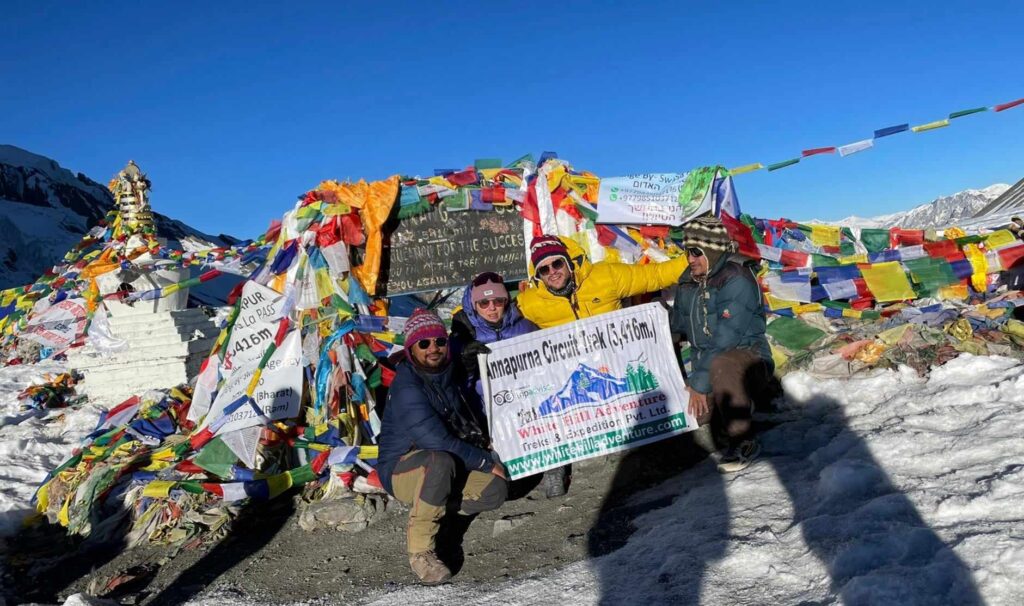
Best season for the trek
The best time to do the Annapurna Circuit Short trek is during spring (March to May) and autumn (August to November). During these seasons, the weather is the clearest. With minimal chances of rain or snow, you can enjoy unobstructed views of landscapes and a disturbance-free journey. The temperature is also the most favorable during these seasons.
Trekking here is also possible in the winter, but it can be very challenging. Since the temperature is freezing and most areas experience snowfall, trekking is not suitable during this season. Similarly, summer/monsoon brings torrential downpour.
Highlights of the Trek
- Witness marvelous views of the Annapurna, Dhaulagiri, Machhapuchhre, Gangapurna, Chulu, etc.
- Cross Thorong La pass, the world’s highest mountain pass.
- Explore the vast array of biodiversity in the Annapurna sanctuary.
- Get acquainted with the culture and lifestyle of the Gurung people.
Annapurna Circuit short Trek Cost
This trek costs about $990 per person. The cost covers transportation pick up and drop off, accommodation at hotels and lodges, day course meals, guides and porters, and trekking permits (TIMS and other required permits).
Annapurna Circuit short Trek Difficulty
The Annapurna circuit short trek is a 12-day journey. This trek is moderate. However, it is only suitable for those who have experience in trekking and are physically fit.
Annapurna Circuit short Trek Map
The journey begins with a drive to Besisahar. From Besisahar, the trek begins as you take the route: Dharapani, Chame, Pisang, Manang, Ledar, Thorang High Camp, Thorang La pass, Muktinath, Jomsom, Pokhara, and back to Kathmandu.
14. Annapurna Circuit Trek – 15 Days
Introduction
The Annapurna region is an amazingly beautiful place that possesses a wide variety of natural and cultural amusements that represent Nepal. The rich rhododendron forests and vibrant mountain villages, along with the towering pinnacles of the Annapurna ranges, have long been the major attractions of this region.
The Annapurna Circuit Trek lets you encounter the temples, monasteries, and some fascinating landscapes of this region, which will fulfill your desires to witness nature and culture in their most elegant forms.
The Annapurna Circuit Trek begins from the lush subtropical regions and extends towards the desert-like alpine regions. The circuit trails around some of the most dramatic views of the Annapurna ranges and Dhaulagiri.
The challenging walk to cross the Thorong La pass is exhausting, yet it is the most rewarding moment of the trip.
Best season to Go
The best time to do this trek is around spring and autumn. The months of March to May and August to November are the most accommodating to trekkers. The weather remains evident throughout the season, which provides unobstructed views of other landscapes and mountains.
These months have the lowest rain or snowfall, also leading to a disturbance-free trip. The temperature around the entire region remains warm and pleasant, thus accounting for a suitable atmosphere for trekking.
On the other hand, winter has severe temperatures. Especially in areas such as the Thorong La Pass, the weather can change dynamically. Heavy snowfall occurs from time to time, leaving trails covered with piles of snow. Trekking can be challenging during this season.
For safety reasons, many areas remain closed for travel. However, during this time, the snowfall blankets the mountains leaving a gorgeous snow-clad look. If you are ready to take the challenge up a notch and possess the required experience and fitness, trekking during the winter can be a blissful experience.
Trekking during summer is least recommended as the seasons coincide with the monsoon. Torrential downpour covers almost the entire region except for a few rain-shadow areas. Trails are muddy, wet, and slippery. Most places also have the risk of landslides and avalanches. Even if you manage to avoid these situations, leeches will bother you throughout the trek.
Highlights of the trek
- Explore the grandeur of the Annapurna region by traversing across lush landscapes, colorful forests, rural settlements, glorious mountainous, and diverse flora and fauna
- Witness marvelous views of mountains such as Annapurna, Dhaulagiri, Nilgiri, Machhapuchhre, Manaslu, etc.
- Summit the Thorong La Pass at 5,416 meters of altitude and get a breathtaking 360-degree view of the Annapurna region
- Discover the world’s deepest canyon: the Kali Gandaki Gorge
- Visit beautiful villages and meet with the interesting ethnic Gurung, Thakali, and Magar settlements
Annapurna Circuit Trek Cost
The cost of this 15-day trek is $1090 per person. The cost includes various services that are required to accommodate you for the trip. Some basic inclusions of the cost are transportation fares, hotels, lodges and teahouse fees, meal costs, guides, and porter charges.
Annapurna Circuit Trek map
The journey of the Annapurna Circuit Trek begins with a scenic drive from Kathmandu to Bhulbhule. From Bhulbhule, you will trek to Ngadi. Moving on, you will follow the route: Jagat, Dharapani, Chame, Pisang, Manang, Ice Lake, Ledar, Thorang High Camp, Thorang La pass, Muktinath, Jomsom, and back to Pokhara.
Annapurna Circuit Trek difficulty
This trek is moderately difficult, but it can get very challenging at certain places. It is suitable for those who have gone trekking in the Himalayan several times before and have accumulated experience regarding the trekking environment here.
One tricky part of the trek is while crossing Thorong-La pass (5416m). Thorong La pass is at the highest altitude (5,416m) of the trip. It will also be the most challenging part as you will be walking almost 8 to 9 hours on this day. The rest of the trip will require you to walk around 5 to 6 hours per day on average.
15. Everest Base Camp Trek – 16 Days
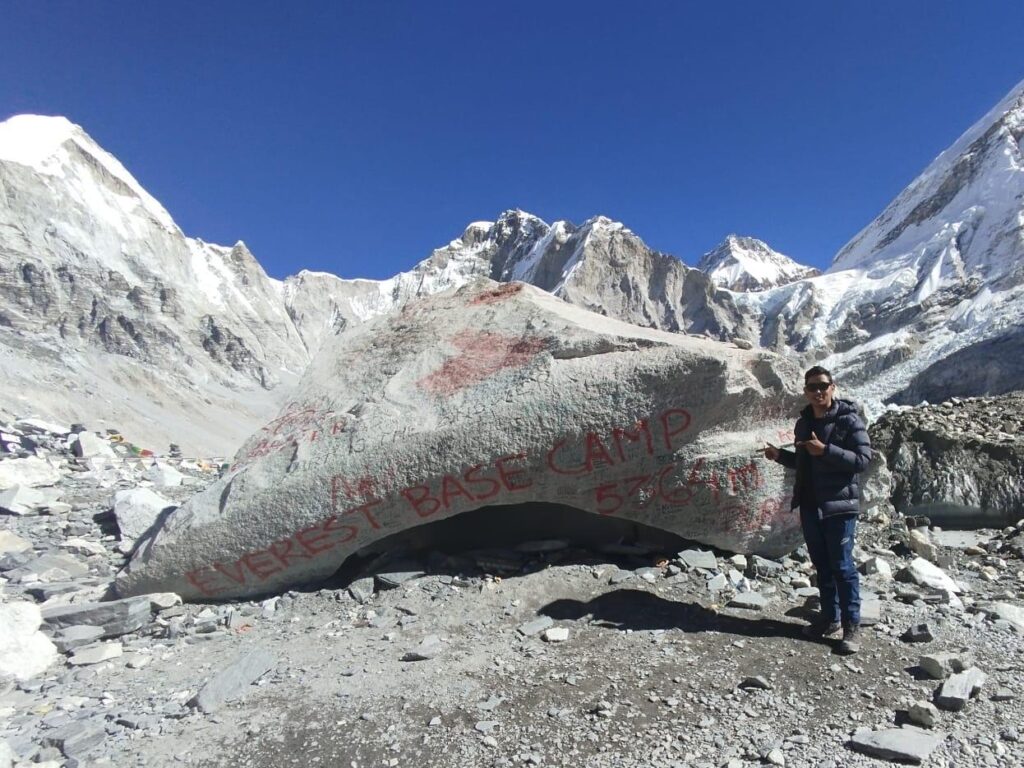
Introduction
Without a doubt, the Everest Base Camp trek is one of the most famous treks in Nepal. The thought of a journey taking you to the foot of the world’s tallest mountain feels adventurous itself.
The Everest Base Camp trek is a journey that one can’t simply forget. With the beauty of the world’s tallest mountains and a region blessed with natural and cultural beauty, the Everest Base Camp trek surely is one of the best journeys one can take in the entire world.
The Everest Base Camp Trek gives you the full experience of what the Everest (Khumbu) region is about. The trails of the trek are nestled in the laps of the Everest with majestic landscapes, Himalayan biodiversity, and cultural richness decorating the path.
Apart from witnessing the greatest massifs, this trek also explores the isolated communities of the Sherpa people living in the Khumbu region. Get acquainted with their lifestyle and culture as it is quite fascinating how they live in the harsh climates of Everest.
The Himalayan biodiversity is yet another factor to include as the merits of this trek. Witness the unique flora and fauna of the Sagarmatha National Park.
Best season to Go
The best time to do the Everest Base Camp trek is during spring and autumn seasons. These two seasons generally occur around March to May and August to November, respectively. These months provide the most suitable trekking atmosphere.
Firstly, the temperature during these months is comparatively warmer than that of winter. The weather is also evident during these months, and there is little to no chances of rainfall or snowfall. Clear skies also mean that the visibility of the views is the best.
In contrast, the winter is freezing. Many areas remain closed, and locals of high altitude areas migrate to warmer lands. Due to snowfall, many parts of the trails are covered entirely by snow. One major attraction during this season is the snow-covered peaks. With the substantial amount of snowfall, most of the peaks are decorated in bright white snow. The view of these snow-covered mountains seems more mesmerizing during this season.
However, trekking during winter is only recommended for highly experienced trekkers. Summer is least recommended as the seasons experience torrential downpour. The trail routes are muddy and slippery, with leeches crawling in most areas. If you are planning to do the Everest Base Camp trek, it is best to avoid the summer season.
Highlights of the trek
- Reach the foot of the world’s tallest mountain, Everest.
- Explore the rich diversity of the Himalayan flora and fauna while visiting Sagarmatha National Park, a member of the UNESCO World Heritage Sites family.
- Get acquainted with the mountainous people, especially Sherpas of the Khumbu region.
- Visit Kalapatthar, where you get marvelous views of mountains such as Everest, Lhotse, Nuptse, Ama Dablam, Cho Oyu, etc.
- Explore some of the most iconic places of the Khumbu region, such as Namche Bazaar, Tengboche monastery, Hotel Everest View, etc.
- The total cost for this trek is around $1235 per person. This cost plan includes flight fares, meal costs, accommodation charges, and minor service charges.
Everest Base Camp Trek Cost
The total cost for this trek is around $1235 per person. This cost plan includes flight fares, meal costs, accommodation charges, and minor service charges.
Everest Base Camp Trek difficulty
The Everest Base Camp trek is moderately not to difficult. But there are specific reasons why this trek can be challenging. Firstly, you will be walking for almost two weeks. This can be tiring if you are not used to physical activities.
Everest Base Camp Trek Map
The Everest Base Camp trek is a 16 days journey that takes you to the heart of the Everest region. The journey begins with an adventurous flight to Lukla. Trekking commences from Lukla as you head towards Phakding. From here, you take the route through Namche Bazaar, Tengboche, Dingboche, Lobuche, Gorakshep, Everest Base Camp, Kalapatthar, Pheriche, Namche, and back to Lukla. Which was one of the best Trekking in Nepal.

